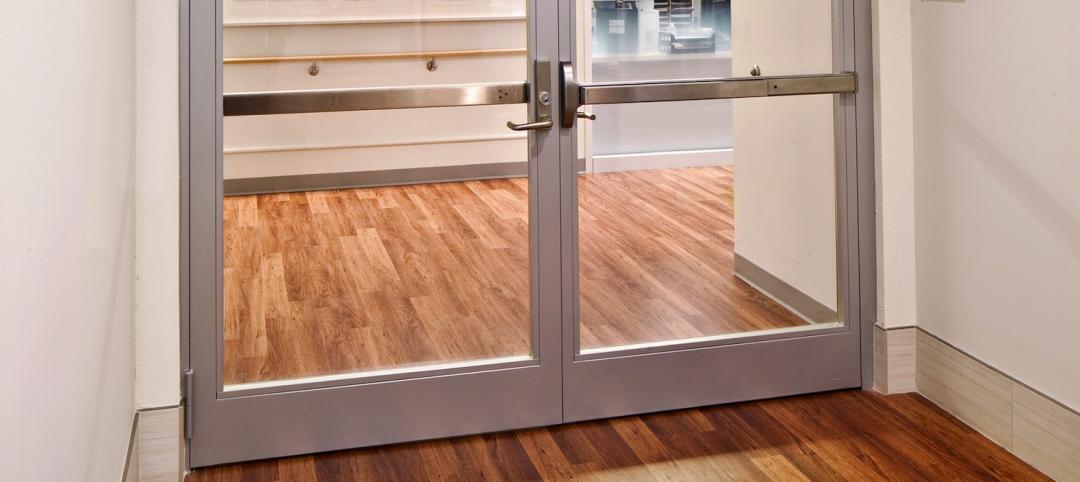Schaumburg, Ill. -- As tornado season escalates and increased tornado activity has devastated parts of the Midwest and the South during the past few weeks, the American Architectural Manufacturers Association (AAMA) has released a voluntary specification for testing and rating building components that will be exposed to tornados and similar extreme wind and rain conditions.
AAMA 512-11, Voluntary Specifications for Tornado Hazard Mitigating Fenestration Products, uses existing test methods and other procedures to qualify windows and other glazed fenestration products for tornado hazard mitigation. The newly released document provides a system for rating the ability of windows to withstand impact, pressure cycling and water penetration, which are generally associated with tornado conditions.
AAMA 512 is a voluntary specification that was developed by the AAMA Tornado Hazard Mitigation Task Group and is recommended for buildings heavily affected by tornados.
“The National Climatic Data Center estimates that a series of tornados in the Southeast and Ohio Valley in February 2008 caused $1 billion in damages,” says Gantt Miller (Winco Manufacturing) who chaired the Task Group that created the Specification. “In creating this specification, the intent is that injury, loss of life and damages resulting from tornados and severe weather can be prevented or greatly lessened.”
The specification outlines that different levels of protection apply to different buildings such as, but not limited to, hospital emergency rooms, community shelters, and police/fire headquarters. These levels of protection are specified based on requirements of the authority having jurisdiction, and each level corresponds to different testing requirements. The level of testing required for each of these types of facilities also depends on the FEMA performance zone where the building is located, as the weather conditions and likelihood of a tornado varies depending on the part of the country.
The Testing and Performance Requirements section of the specification outlines the necessary test conditions for adhering to AAMA 512. According to the specification, test specimens should be tested for anchorage, missile impact, water testing and cycling (for windows used in hurricane-prone zones only).
AAMA 512-11, Voluntary Specifications for Tornado Hazard Mitigating Fenestration Products is available to AAMA members at a cost of $15 for download, $30 for a paper copy and $35 for a CD. Non-members may purchase the document at a cost of $45 for download, $90 for a paper copy and $96 for a CD. To order AAMA 512-11, visit the AAMA Online Publication Store. AAMA 512-11 is also available to AAMA Category 1 members through the Publication Licensing Program.
Related Stories
| Sep 26, 2013
Literature review affirms benefits of daylighting, architectural glazing
The use of glass as a building material positively impacts learning, healing, productivity and well-being, according to a white paper published by Guardian Industries and the University of Michigan Taubman College of Architecture and Urban Planning. The findings highlight the significant influence daylighting and outside views have on employees, workers, students, consumers and patients.
| Sep 19, 2013
6 emerging energy-management glazing technologies
Phase-change materials, electrochromic glass, and building-integrated PVs are among the breakthrough glazing technologies that are taking energy performance to a new level.
| Aug 23, 2013
The Exploratorium’s tall order
The newly-opened Exploratorium has brought energy and excitement to the city’s bustling waterfront. EHDD transformed the historic Pier 15, built in 1915, to a 330,000 square foot indoor and outdoor campus, being touted as the largest net-zero building in the city and potentially the largest net-zero museum in the world.
| Aug 22, 2013
Energy-efficient glazing technology [AIA Course]
This course discuses the latest technological advances in glazing, which make possible ever more efficient enclosures with ever greater glazed area.
| Jul 23, 2013
Clearly Protective: Glazing for Life Safety at Seidman Cancer Center
Design team turns to fire-rated glazing for interior doors to give access to natural light, patient privacy and clear wayfinding throughout the building.
| Jul 12, 2013
Statue of Liberty Monument bolstered by Vetrotech Saint-Gobain’s fire-rated glass
The Statue of Liberty National Monument reopened to the public featuring two new fire stairwells and an elevator that will allow visitors with reduced mobility to look into the Statue’s interior structure.
| May 17, 2013
5 things AEC pros need to know about low-e glass
Low-emissivity glasses are critical to making today’s buildings brighter, more energy-efficient, and more sustainable. Here are five tips to help AEC professionals understand the differences among low-e glasses and their impact on building performance.
| May 8, 2013
Preventable curtain wall failures - AIA/CES course
In many cases, curtain wall failures are caused by fairly simple errors that occur during the fabrication and installation process. This presentation will highlight common errors and when they typically occur.
| May 8, 2013
Guardian’s Scott Thomsen headlines Glass Performance Days Finland Conference, June 11-15
Scott Thomsen, president of Guardian Industries Global Flat Glass Group, will engage the global glass technorati in an opening speech at Glass Performance Days Finland June 11-15 in Tampere. In addition, Guardian technologists and scientists will present a wide variety of technical papers and glass industry innovations.
| May 6, 2013
SAFTI FIRST announces 3D Autodesk Revit models for fire rated wall, window, and door systems
SAFTI FIRST, leading USA-manufacturer of fire rated glass and faming systems, is proud to announce that Autodesk Revit models are now available for its fire rated walls, window and door systems via www.safti.com and Autodesk Seek.















